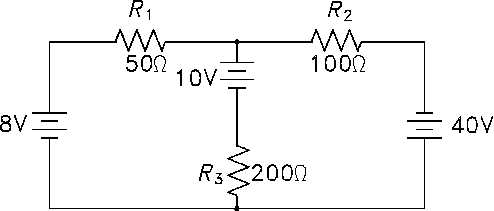Basic DC Theory
DC CIRCUIT ANALYSIS
DC CIRCUIT ANALYSIS
All of the rules governing DC circuits that have been discussed so far can now
be applied to analyze complex DC circuits. To apply these rules effectively, loop
equations, node equations, and equivalent resistances must be used.
EO 1.15
Given a simple DC circuit, DETERMINE the
equivalent resistance of series and parallel
combinations of elements.
Loop Equations
As we have already learned, Kirchhoff’s Laws provide a practical means to solve for unknowns
in a circuit. Kirchhoff’s current law states that at any junction point in a circuit, the current
arriving is equal to the current leaving. In a series circuit the current is the same at all points
in that circuit. In parallel circuits, the total current is equal to the sum of the currents in each
branch. Kirchhoff’s voltage law states that the sum of all potential differences in a closed loop
equals zero.
Using Kirchhoff’s laws, it is possible to take a circuit with two loops and several power sources
(Figure 37) and determine loop equations, solve loop currents, and solve individual element
currents.
Figure 37 Example Circuit for Loop Equations
Rev. 0
Page 49
ES-02

